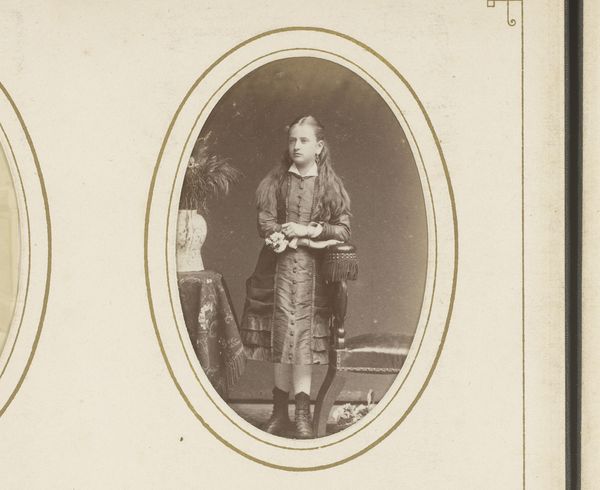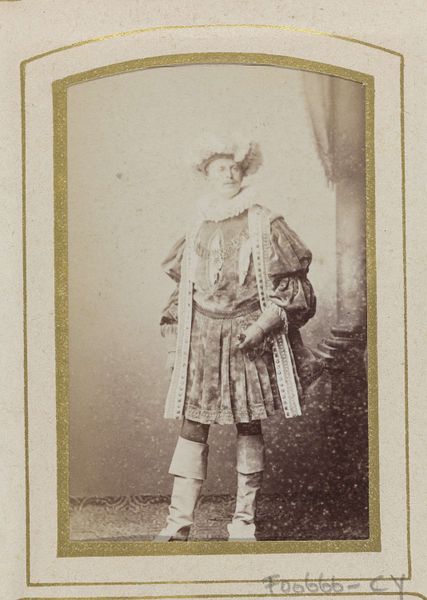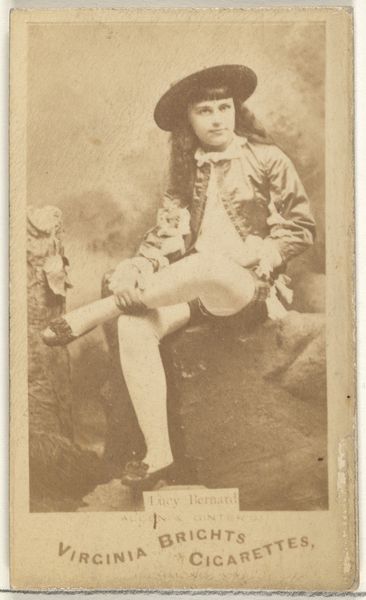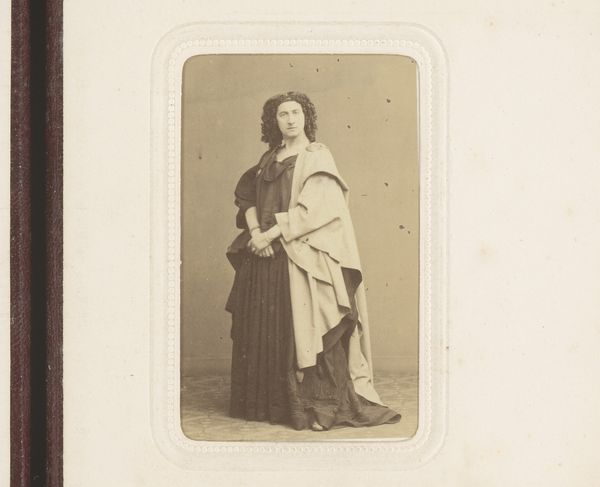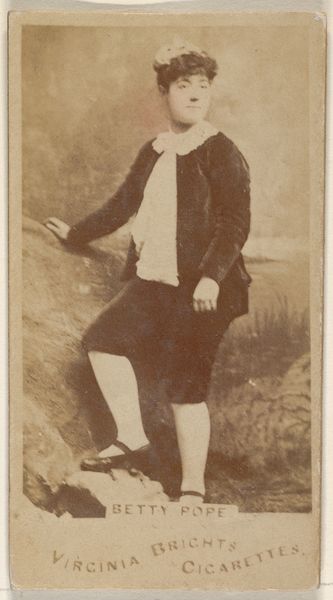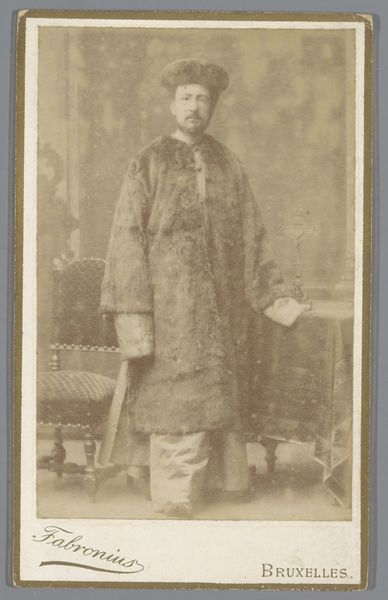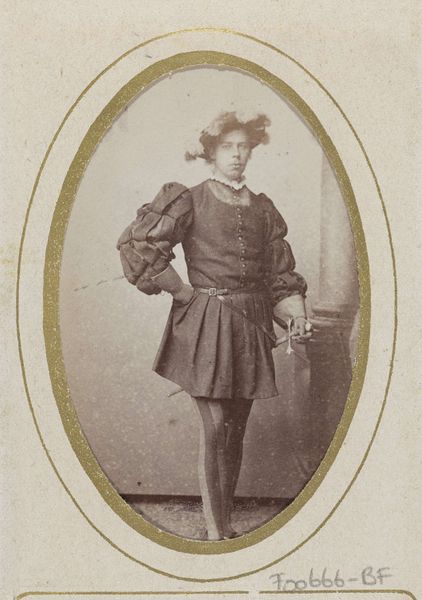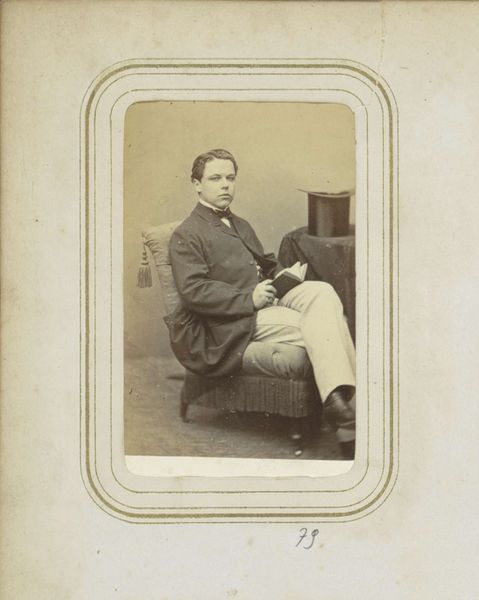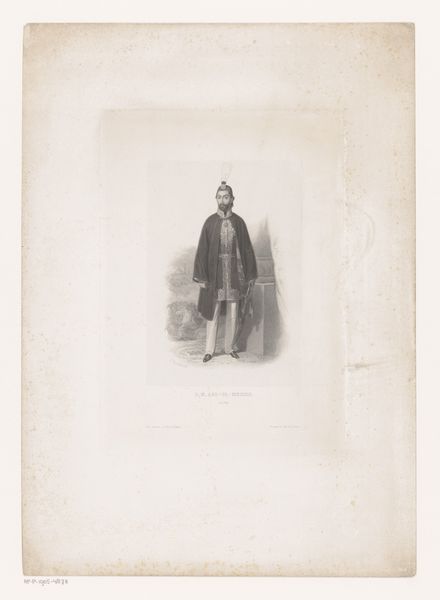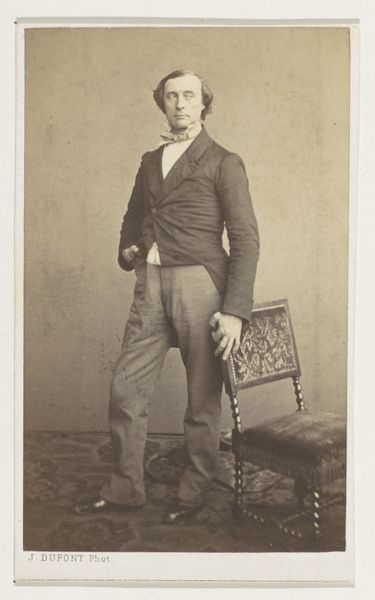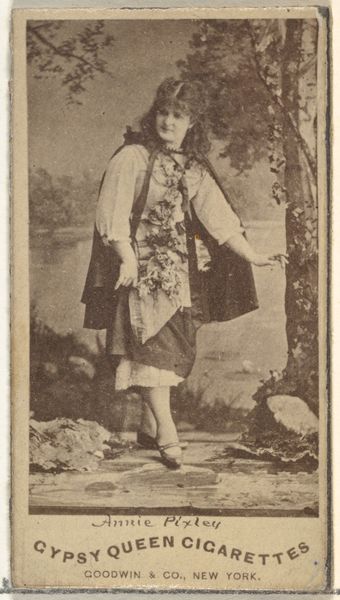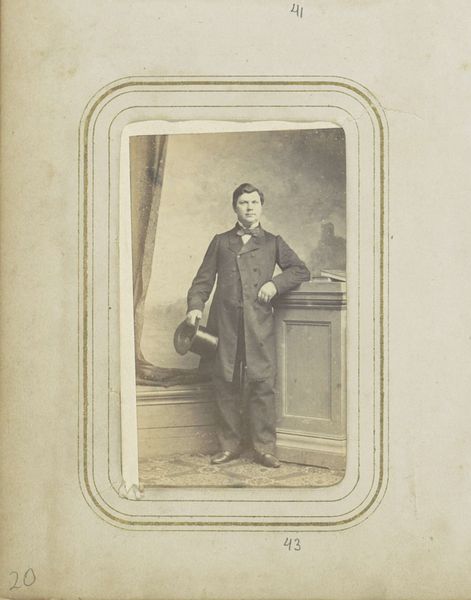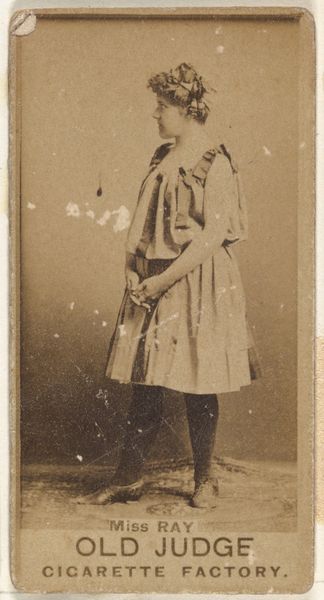
Portret van een Algerijnse zoeaaf, staand met boek in de hand 1870 - 1900
0:00
0:00
photography
#
portrait
#
photography
#
19th century
#
realism
Dimensions: height 104 mm, width 62 mm
Copyright: Rijks Museum: Open Domain
Curator: This striking photographic portrait, "Portret van een Algerijnse zoeaaf, staand met boek in de hand", roughly translates to 'Portrait of an Algerian Zouave, Standing with Book in Hand,' and it's dated between 1870 and 1900. The photographic studio that produced it was named "Photographie du Regiment Réservé". Editor: My first impression is one of studied dignity, despite the seemingly artificial outdoor backdrop. It almost feels staged in its deliberate quietness, the book his only prop. Curator: It's a carefully constructed image, playing into certain archetypes and the exoticism Westerners attributed to North Africans during that period. The Zouave uniform itself is a complex symbol. It’s originally Algerian, yet adapted by the French army. This image could represent colonial power dynamics and the romanticizing of the “other.” Editor: Right, I see what you mean about constructed representation, especially given the mass commodification and circulation of photographic portraits at this time. The uniformity of it strikes me. Look closely at the materials: The crisply-rendered cloth suggests industrial textile production in France while imitating the North African artisanal handcraft tradition that informed their aesthetics and making. There's a clash between the depicted subject and the conditions that enabled this photograph. Curator: The book he holds could indicate knowledge, wisdom. A conscious effort perhaps to elevate the status of the portrayed subject, to portray intellect beyond simple exoticism. Yet, doesn't its presence seem more ornamental than intrinsic, perhaps underscoring how colonial powers could "educate" the colonized, assimilating them. Editor: Interesting. I hadn’t thought of it that way, but his grip seems unusually tight, the spine of the book entirely obscured. Perhaps his posture reveals the weight he is obliged to carry while negotiating an identity burdened by cultural displacement and social imposition. Curator: Photography as cultural record then—both capturing and constructing perception, shaping historical narratives, as it's also subject to the bias and material means by which the work came into being. Editor: Yes. And the tangible weight of production—camera mechanisms, photographic paper chemistry—impact what this portrait communicates, even beyond cultural context. They underscore this individual's experience through that colonial gaze.
Comments
No comments
Be the first to comment and join the conversation on the ultimate creative platform.
